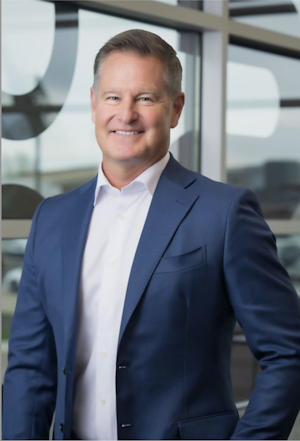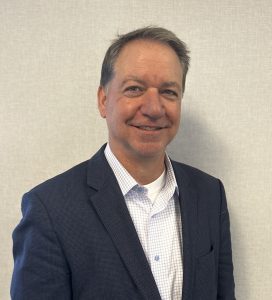 When it comes to data center development projects, question number one is usually about energy. With AI now driving accelerating demand across the sector, that question is looming larger than ever. Mission Critical Group (MCG) is a relatively young entrant into this space, focusing on design and implementation of the power infrastructure needed to run the sort of high density computing that the industry is now building out at a record pace. With us today to talk about their approach is CEO Jeff Drees.
When it comes to data center development projects, question number one is usually about energy. With AI now driving accelerating demand across the sector, that question is looming larger than ever. Mission Critical Group (MCG) is a relatively young entrant into this space, focusing on design and implementation of the power infrastructure needed to run the sort of high density computing that the industry is now building out at a record pace. With us today to talk about their approach is CEO Jeff Drees.
TR: What is your background and what drew you to MCG ?
JD: My career started in the Air Force designing, building and operating off-grid power plants first in Europe and then in the Middle East before getting my engineering degree. My career has always been around power, power distribution, power equipment, automation, and/or HVAC. Along the way I worked for Chris Curtis, who was the CEO of Schneider Electric North America at the time. Chris is who really launched MCG and is the executive chairman. So when he reached out to me, it was a chance to work with him in a space that was in startup mode. They were building the foundation around power reliability and power solutions. Being on the ground floor of creating something while having some ownership as well was very attractive.
TR: Where does MCG fit into the industry ecosystem today?
JD: We’re on the foundation level as a power solutions business that’s really focused around critical applications for customers. We manufacture products like switchgear, switchboards, electrical houses, and generator enclosures. And we have a design and service firm that integrates our products and third-party products to meet customer requirements. Then we offer design and ongoing service and professional services for our clients as well. We offer our customers an end-to-end power platform from product to professional services.
TR: What geographies do you focus on?
JD: We have western region production facilities that typically serve the western and middle regions of the US. In fact, we’re adding additional plants right now at both our switchgear and our generator enclosure business.
TR: What type of customers do you target?
JD: Because of the amount of activity that’s going on, we don’t want to be everything to everybody. We try to select customers that have a good sense of what they expect to need over the next 3-5 years and are looking for a partner who can help build out the capacity to serve that. Hyperscalers are growing at a rapid pace, but we’re seeing that some want a partner that is honest about what they can legitimately build and what their lead times are. We also have more diversity in our switchgear business because of its origins in oil and gas and marine. So now we’re going to be similarly selective about what type of data center customers we start building switchgear for. Do they believe in partnership? Do they believe in long-term planning? I think that if you provide everything for everybody, what happens is that you disappoint customers. You push out your lead times, and you constantly get on a redate cycle. We want to be the one with the shortest lead times, and when we receive their business we want to hit the dates that we commit to.
TR: What does the demand look like for power infrastructure right now?
JD: I never saw demand like this in my career. You see everything go through a cycle, but this seems to be much more of a sustained cycle. Demand really took off around early of 2021, coming out of COVID, and it just kind of skyrocketed and has not subsided. In fact, it’s only grown more rapidly. The demand is real. We now have new switchgear, switchboards for low voltage and medium voltage, and arc-resistant gear that really satisfies the data center market. So now we can bring that product to our customers with generator enclosures and provide a really good end-to-end solution from both supply to power backup, which is why I put us in the power solutions reliability sector for mission critical companies.
TR: AI seems to be driving demand right now, do you see any signs of that changing?
JD: It’s real. The big companies really want to advance their offering through AI and we are seeing that demand. There is a lot of momentum around new chip technology, which means high-density compute with lots of power concentration. We will deal directly with customers that have that as an offering, but we will also serve customers who are trying to serve those customers. A very large ecosystem has been created to serve AI. I would say it’s not a fad. It’s very real in terms of how customers are communicating with us and why they’re building out so much scale
TR: How are these changes manifesting in the design and operation of data centers?
JD: Smaller footprints with more power concentration and more modularity. And because of the pace of the build-out, a lot of customers really want to do it offsite. They want more skid-built central plants and cooling plants. They want modularization of everything: pre-built in a factory on a skid, shipped to the site, and connected like a Lego block. AI is driving so much power density in a small footprint that the strain is really around building where there is actually power availability with the utility and at a good rate.
TR: Does the resulting environment make it easier or harder for MCG to execute?
JD: Quite frankly, I think it’s created an opportunity for us because we have a great product offering and a great legacy. We’re made up of three companies today that we are bringing together: Point Eight Power, Mission Critical Facilities International, and Johnson Thermal Systems. Most of the customers I’m talking about would only deal with the major OEMs in the past. But because they’re capacity-constrained, they are now reaching down into tier two companies like MCG. The market has grown so rapidly and our lead times are very attractive that we’re now being considered to be at the same level as a tier one.
TR: What new technologies do you see changing things in power and cooling?
JD: There has been a big transformation on the cooling side driven by sustainability. Customers went away from a water-cooled to an air-cooled chilled water system, and I think it’s going to take another step. Because of that power concentration on the chip on the board, there’s a lot more liquid-cooled applications being designed. We don’t build that product, we just provide the power for whatever cooling solutions brought to the customer. But I see designs changing from water to air to now liquid and liquid to chip.
On the power side the changes are in modularity and off-site construction. We have our ear to the ground with a lot of the generator OEMs, and they’ve done a good job being sustainable. It’s still a diesel generator solution, but they are driving down the carbon footprint by making a more efficient product. But I think what they’re saying now is that given the fleet they have out there, how might we actually use it to convert it to supplying power and creating micro grid applications.
TR: Why would they take that step?
JD: Power utilities are not able to build enough capacity to serve this new market in telecommunications and data centers, and it’s hard to provide a complete data center with 100% renewable power. Microgrid applications will combine renewable, generator, and utility power with the ability to switch based on the availability, the cheapest power, or the more sustainable solution. But we are probably 5 to 10 years away from where you could sustainably be off grid. So right now, customers are looking for more and more creative solutions for the many generators they are buying to sit as backup and run 1% of the time.
TR: What is the balance between greenfield and brownfield projects you are involved with right now?
JD: Because of the newness of the AI computing power, it’s really around greenfield. The demand around greenfield has been far outstripping anything on the brownfield side, it is probably around 10 to 1 in terms of demand. But we do see quite a few aging data centers and the origin of MCG was a brownfield retrofit. So, we have that capability, and we are now seeing customers who also have a recycled data center brownfield application.
What’s being built here in this 5-7-year stretch will probably equate to all that has been built collectively before that. But then in 10 years you’ll have all this aging infrastructure to repurpose or recycle. I also like what’s happening with the repurposing of malls as a data center hub. We do a lot of refurbishments of equipment, whether it’s a UPS, switchgear, circuit breakers, etc. But today the greenfield demand is just too strong, so that part of our business is a fraction of the total now.
TR: How does MCG differentiate itself?
JD: There are a lot of critical power infrastructure companies in the market, and the 4-5 major players out there are really good and make up most of the market. First, we are very disciplined around committing to and hitting the dates for the customer. Second is having the shortest lead times. For our switchgear we are able to design around any of the major OEM’s circuit breakers so if the customer wants brand A or B or C, we can provide that to them while still providing the shortest lead times. That’s a competitive advantage.
TR: Thank you for talking with Telecom Ramblings!
If you haven't already, please take our Reader Survey! Just 3 questions to help us better understand who is reading Telecom Ramblings so we can serve you better!
Categories: Datacenter · Energy · Industry Spotlight






Discuss this Post